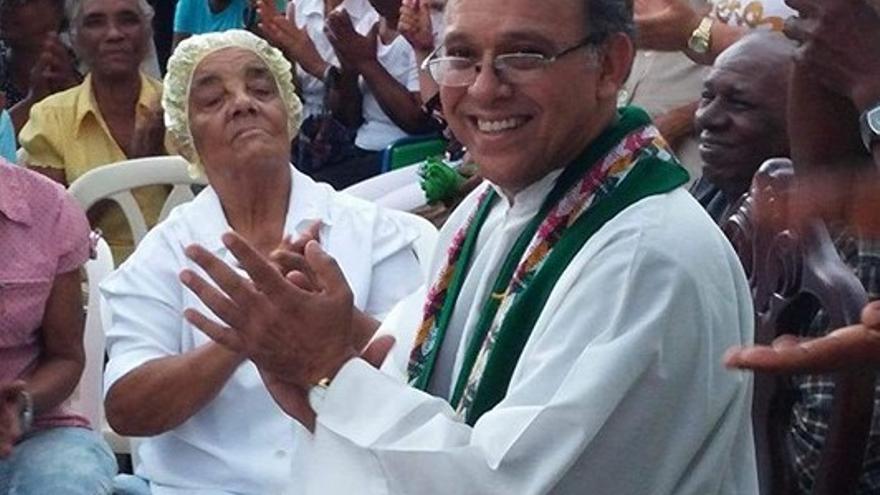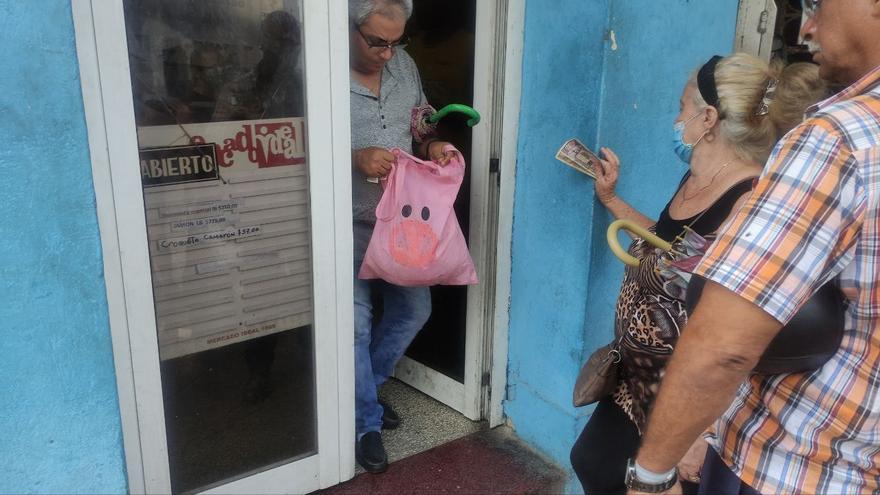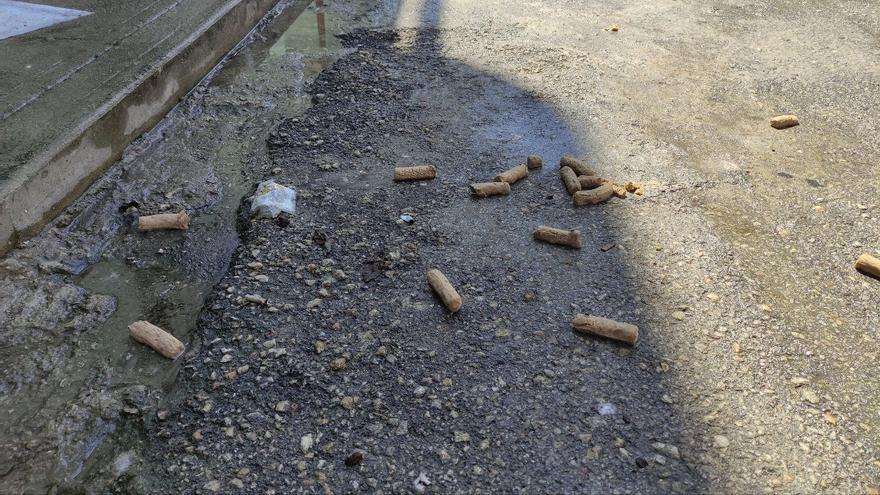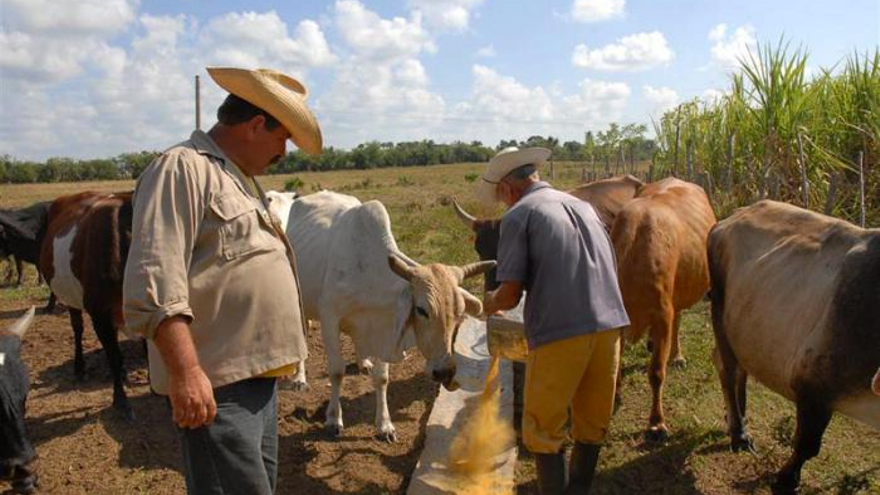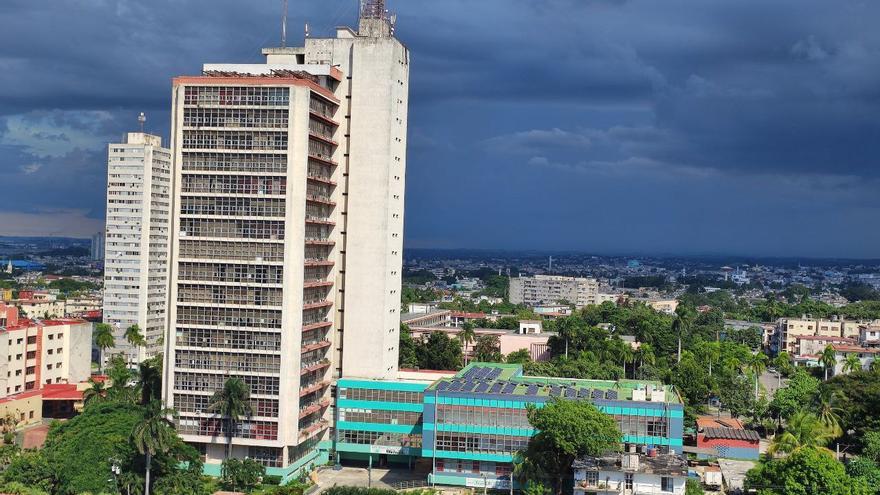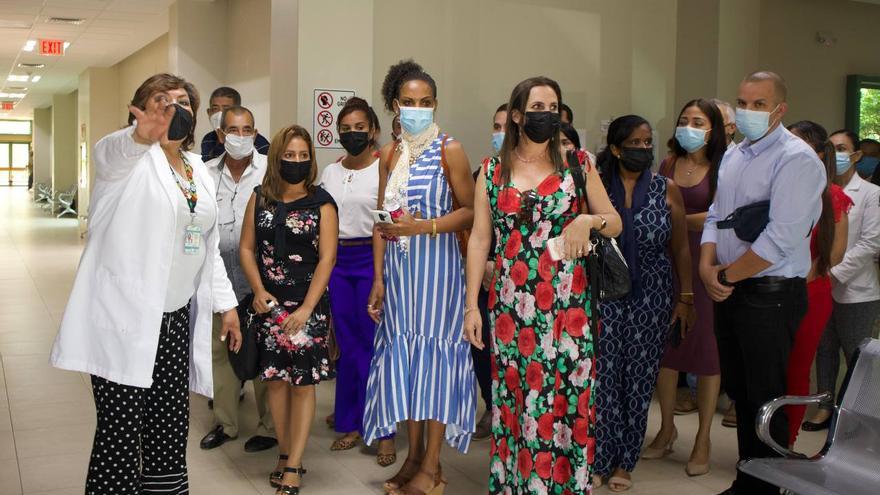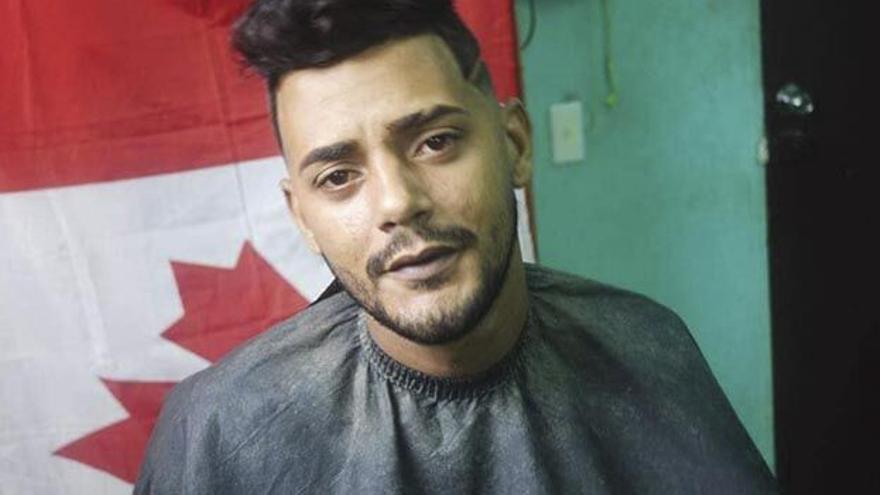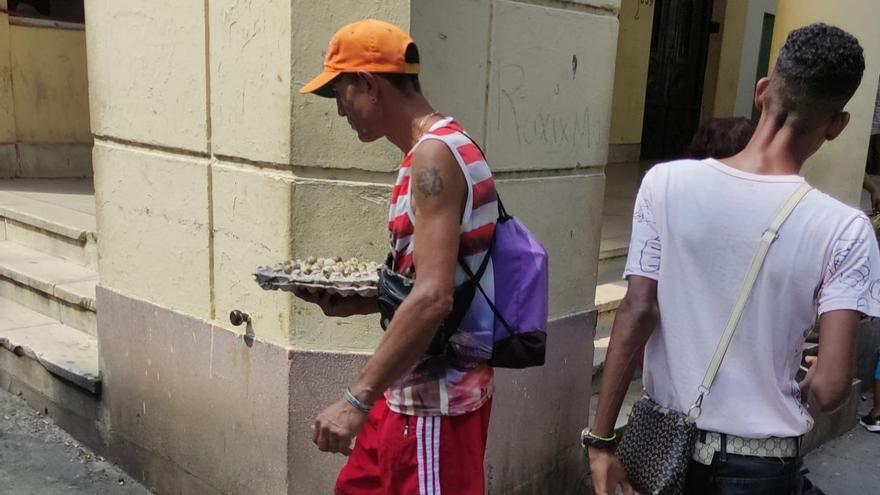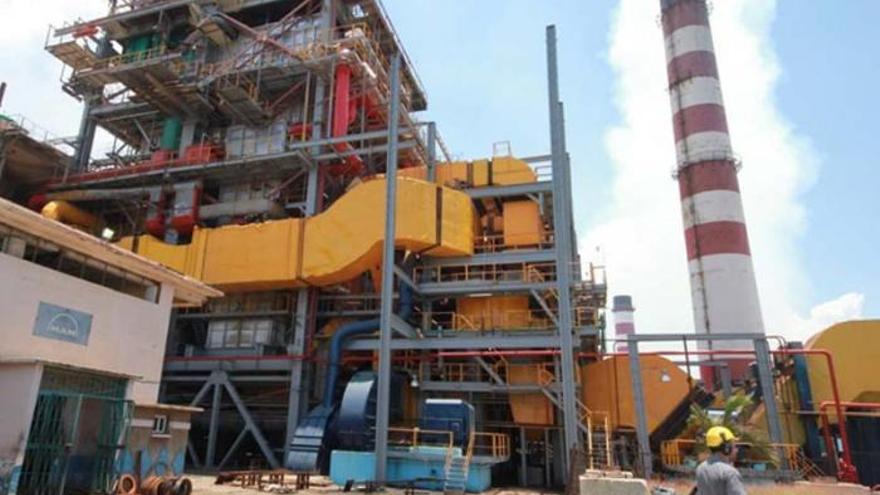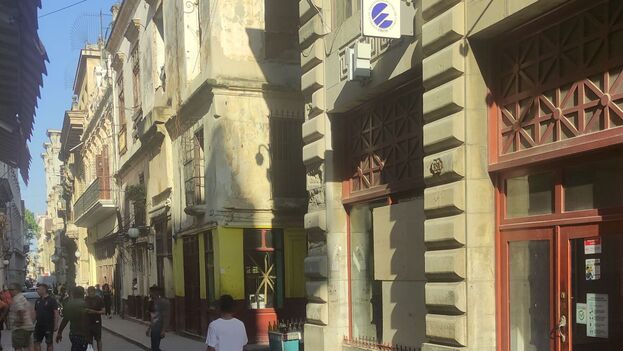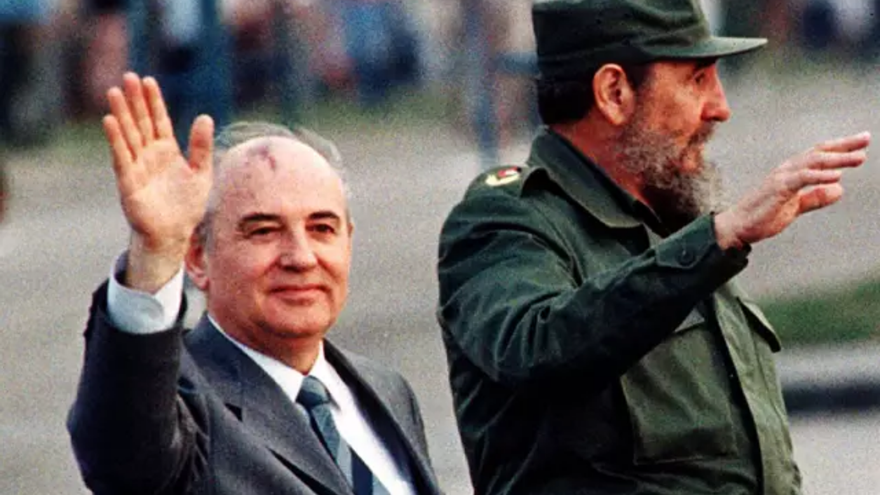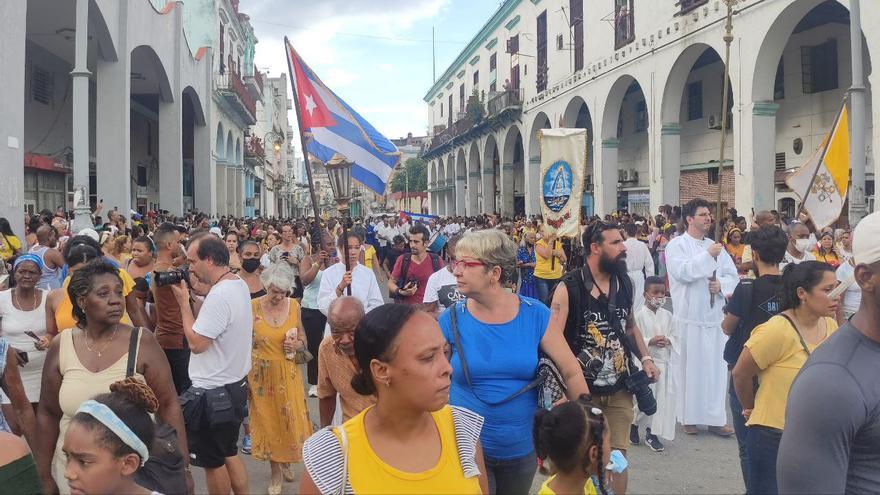
![]() Some with candles, with very few sunflowers, that is how the devotees entered the church of the Virgen de la Caridad de El Cobre on the corner of Manrique and Salud Streets, in Centro Habana. This Thursday, the day on which the Patron Saint of Cuba is celebrated, inflation has also been noted in the price of sunflowers, the flower that is offered to Cachita (the Virgin’s nickname) because its yellow color recalls the golden mantle worn by her image.
Some with candles, with very few sunflowers, that is how the devotees entered the church of the Virgen de la Caridad de El Cobre on the corner of Manrique and Salud Streets, in Centro Habana. This Thursday, the day on which the Patron Saint of Cuba is celebrated, inflation has also been noted in the price of sunflowers, the flower that is offered to Cachita (the Virgin’s nickname) because its yellow color recalls the golden mantle worn by her image.
From Galiano Avenue, metal fences and several policemen controlled foot traffic to the church in Havana, where thousands of people attend every September 8 to pay tribute to “the mother of all Cubans.” This year, the date has coincided with a deep economic crisis, which has cut the offerings that are left on the altar at the entrance of the church.
“I only bought one candle and it practically melted in my hand, because it seems that they mixed the wax with tallow. It cost me 50 pesos, but at least I was able to bring something, because the smallest bouquet of sunflowers cost 300,” lamented a young woman who, dressed in yellow clothes, approached the place this morning. “I’m going to have lunch and come back in the afternoon for the procession”. She said goodbye to her friends a while later.
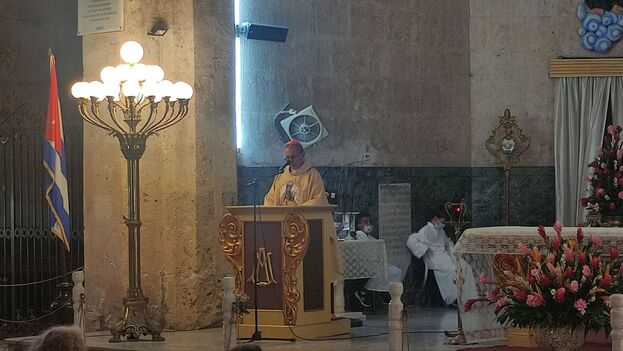
At four in the afternoon, in a very crowded church, a mass was presided over by Cardinal Juan de la Caridad García, Archbishop of San Cristóbal de La Habana, together with the newly appointed auxiliary bishop of the capital’s Archdiocese, Eloy Domínguez. It was attended by the Spanish ambassador in Cuba, Ángel Martín Peccis.
The prelate said that the Church is the house “of all Cubans, the house of the Mother of God, in this house there is room for us all.” And he added that Cachita “wants peace and harmony for all Cubans.” “With God, everything and without God, nothing,” declared the archbishop during his sermon.
After five in the afternoon, the image of the Virgin appeared at the door of the church and was received with applause, tears and hundreds of raised arms trying to capture the moment with their mobile phones. On the church’s facade, a huge Cuban flag fluttered in the gentle breeze this Thursday. In the crowd, people dressed in alternating yellow and white clothes, some with masks and others with their faces uncovered. continue reading
The procession initially walked down Manrique Street, until it reached Zanja and then turned onto Galiano to join the stately Reina Street, where residents leaned out from the rooftops and balconies to follow the cortege. Some flower petals also fell from the heights as the Virgin passed by, although in a smaller volume than in previous years, when it was less difficult for Cubans’ pockets.
Applause, shouts of vivas a la Virgen and popular tunes like: “And if you go to El Cobre, I want you to bring me a Virgencita de la Caridad” were heard during the tour through one of the poorest and most populated areas of the Cuban capital. Megaphone in hand, on Zanja Street, the Cardinal asked Cachita to pray for “those who have died from Covid, in the Saratoga Hotel accident, and in the Matanzas fire.” The crowd received his words in silence, and then burst into shouts and applause when Juan de la Caridad García added “and those who have died traveling through jungles, rivers and seas, in search of other horizons.”
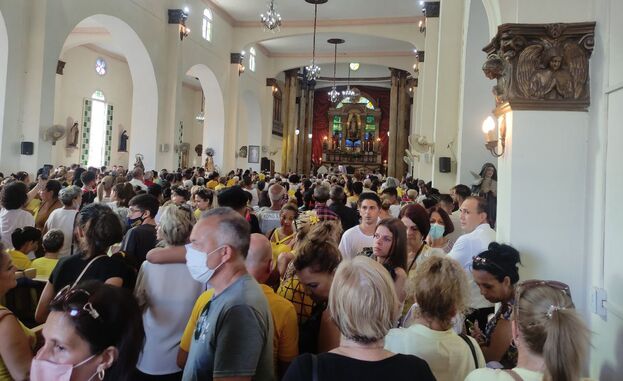
“I hadn’t seen this street so full of people and so full of emotion since July 11,” said a young man who claimed to have participated in that day’s protests last year. The vicinity of the Havana Capitol, especially Galiano, Zanja and Reina streets, were several of the more frequented routes for the protesters, who later gathered around the Cuban Parliament building.
The crowd’s passage was guarded by a strong police operation and the obvious presence of State Security agents dressed in civilian clothes. The first procession after the suspension of public activities forced by the pandemic has also been marked by official edginess after the popular protests of July 11 last year and the demonstrations this summer in various locations in Cuba.
Among the Government’s fears has been that the procession would turn into the scene of some demand for the release of political prisoners, as independent organizations and relatives of those convicted have done in the past.
High prices also affected the devotees of the city of Sancti Spíritus, who had to pay 20 pesos each for roses and candles to be offered at the Church of our Lady of Charity in that city. Hundreds of people gathered at the Church, and many others joined the procession that began after mass. Mobile data network congestion frustrated many who wanted to stream the moment live on social media.
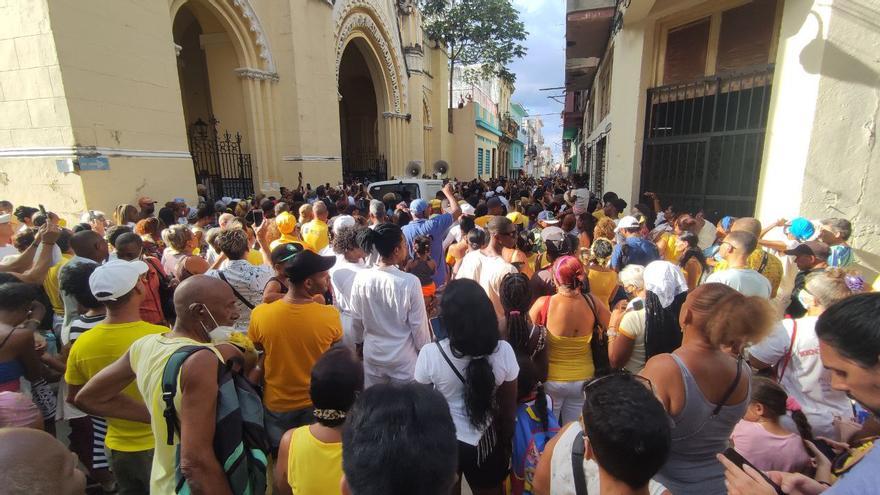
Similar processions were held in other parishes in the country, especially the one that left this Wednesday from the Sanctuary of El Cobre in Santiago de Cuba, where dozens of people participated to celebrate the 410th anniversary of the discovery of the image of the Virgin. This Thursday, a procession was also held in Santiago, from the Archbishop’s headquarters to the Cathedral.
For the remainder, the day has been influenced from the beginning by the calls for harmony and the desire for freedom for Cuba. The nun in charge of the Association “Daughters of Charity in Cuba,” Nadieska Almeida, published an article on Facebook in which she questioned what was going to happen in Cuba after the day of remembrance of the Virgen de la Caridad de El Cobre. “When it’s all over, what will be left?” she asked.
The nun described the current situation in the country with harsh words: “I see nothing but the same misery, the same repression, the same sadness on the faces of so many, tears like those of the family of the little girl who died in Guantánamo in a school disaster, or those of the relatives of the ones who are dying due to lack of medication, especially dengue fever… and so many more”.
Almeida summed up her plea to Cachita directly, and also by alluding to the ecclesiastical authorities in Cuba: “Give wisdom to the rulers and courage to the Church so that it does not stop proclaiming what is right. And there will continue to be a deep desire for a free, hoping and hopeful Cuba, and that we will continue to believe that it will be possible, and why not?
____________
COLLABORATE WITH OUR WORK: The 14ymedio team is committed to practicing serious journalism that reflects Cuba’s reality in all its depth. Thank you for joining us on this long journey. We invite you to continue supporting us by becoming a member of 14ymedio now. Together we can continue transforming journalism in Cuba.


